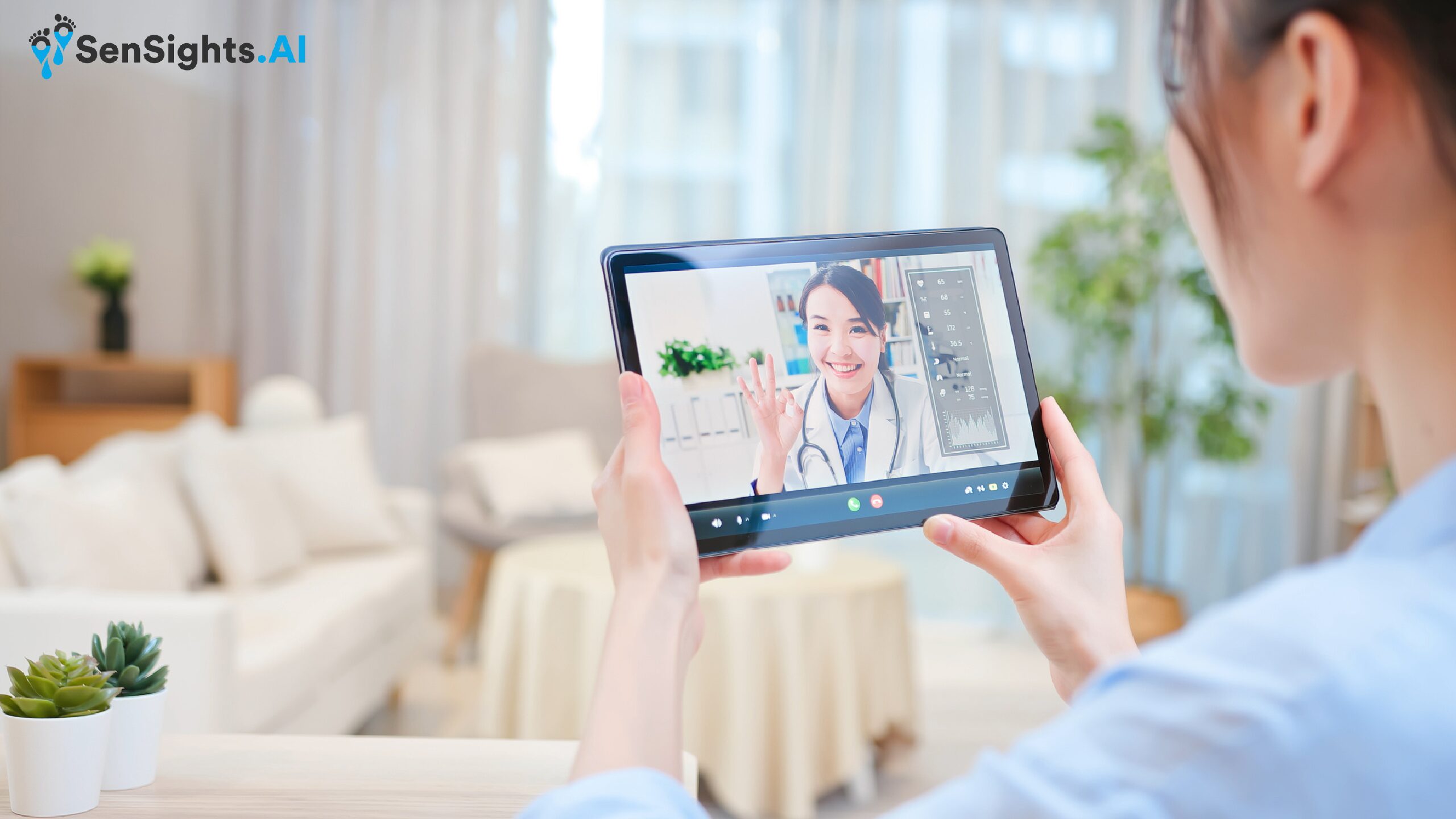Medically Reviewed By: Dr Alex Evans
Key Takeaways
Telehealth’s Rise: Technological advancements over the past decade have revolutionized many sectors, including healthcare. Telehealth now allows patients to experience hospital-level care from the comfort of their homes, making medical care more accessible and convenient.
- A Paradigm Shift: Telehealth isn’t just a temporary trend; it represents a significant shift in how we perceive and access healthcare. By breaking down barriers and prioritizing patient convenience, telehealth hints at a future where healthcare becomes even more patient-centric as technology continues to advance.
Diverse Telehealth Services: From Remote Patient Monitoring and virtual consultations to AI-powered diagnostics and Hospital-at-Home programs, telehealth encompasses a broad range of services. These innovations ensure timely care, eliminate the need for physical presence, and even provide instant preliminary diagnoses.
The previous decade has witnessed a monumental transformation in how we live our daily lives; technological advancements have completely rewritten the paradigms of our interaction with other members of society, whether they are personal connections or service providers. From shopping to entertainment, digital innovations have blurred the lines between the virtual and the real. And like any other service, healthcare is no exception. With the increasing popularity of telehealth, medical care has never been more accessible or convenient. Imagine experiencing hospital-level care while lounging in your living room. Sounds a bit too good to be true, right? Well, read on to find out how telehealth is making this a reality.
1. Remote Patient Monitoring
Remote Patient Monitoring (RPM) systems are a key component in bringing hospital care to your home. These systems utilize wearable sensors and devices to collect and transmit patient data directly to healthcare providers. Whether it’s monitoring heart rates, blood pressure, or glucose levels, RPM allows medical professionals to keep a vigilant eye on patients without the need for physical presence.
2. Virtual Consultations
The cornerstone of telehealth is virtual consultations. With the power of the internet, patients can now communicate with their doctors via video calls. This eliminates the need for long waiting hours and provides patients with immediate access to professional care. It’s not just limited to primary care; specialists across various fields are now offering their expertise virtually.
3. Digital Prescriptions
Gone are the days when one had to visit a clinic just to get a prescription refilled. With telehealth platforms, doctors can now send digital prescriptions directly to a patient’s preferred pharmacy. This not only saves time but also ensures that patients get their medications without delay.
4. Hospital-at-Home Programs
Taking the concept of “hospital care in your living room” quite literally, several healthcare providers have initiated hospital-at-home programs. Patients enrolled in such programs receive hospital-level care at home. From administering IVs to monitoring post-surgical recovery, qualified medical professionals provide comprehensive care in the comfort of the patient’s home.
5. AI-Powered Diagnostics
Artificial Intelligence (AI) is revolutionizing healthcare. With AI-powered diagnostic tools, preliminary diagnoses can be made almost instantly on the basis of the symptoms the patient describes. While these tools are inadequate as a substitute for human experience and expertise, they do offer an additional layer of support and help speed up the diagnostic process.
6. Seamless EMR Integration
Electronic Medical Records (EMR) have been around for a while. However, their integration with telehealth platforms ensures that, in a fairly efficient replication of the hospital experience, doctors have all the necessary patient information available on their screens during the virtual consultation.
7. Enhancing Patient Compliance
Old-age patients often experience enhanced comfort and control of their consultation and treatment process when they are allowed and enabled to manage it remotely by themselves . Telehealth services often come with reminders, follow-up schedules, and educational resources, ensuring that patients adhere to their treatment plans and medication schedules.
8. Post-Acute Care and Rehabilitation
The process of recovery doesn’t just get completed abruptly once the patient has been discharged from the hospital. To support the patient in the process, Telehealth offers post-acute care and rehabilitation services. Be it physiotherapy sessions, post-surgical check-ups, or counseling, patients can avail all these services without stepping out of their homes.
In conclusion, telehealth proposes to be not merely a fleeting trend but a paradigm shift in the way we perceive and access healthcare. It is breaking down barriers, making healthcare more inclusive, and truly bringing the hospital experience to our living rooms. As technology continues to evolve, there’s no telling how much more convenient and patient-centric healthcare will become.
MarkiTech has various subsidiaries with products and services targeted towards digital healthcare and telehealth/telemedicine and virtual clinic with laser focus on helping seniors age in place and help their caregivers.
Sensights.ai is a company focused on remote patient monitoring and aging solutions, which utilizes artificial intelligence to track the health of patients and keep a round-the-clock connection between caregivers and patients.
As well, Veyetals uses rPPG and AI modeling algorithms to capture the light reflected by the blood vessels under a patient’s skin to measure vitals anytime, anywhere.
Lastly, we are now launched our latest Mental Health AI Scribe tool called CliniScripts.com

